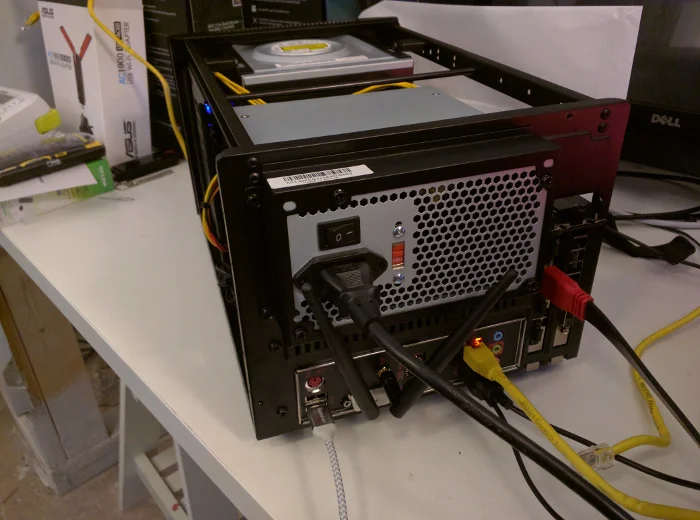
While the options for Linux computers from commercial vendors are still needles in the proverbial haystack of OEM Windows equipment out there, there are more and more options available to a consumer who wants a good, solid device that’s ready-to-use with no messing around.
Still, there are more Linux OEM computers than I could look at for one article—and the options tend to be different in Europe than they are in the United States, with providers like Entroware that don’t ship to the latter at all.
In this article, I look at offerings from three of the most well-known Linux OEMs on the western side of the pond: ZaReason, System76, and Dell.
ZaReason Mediabox 6550
When I sent out a letter to several manufacturers, I asked specifically for Linux laptops, because that’s what I’d planned on writing about. But whenever they’d ask which part out of the catalog I wanted, my response was always, “send me what you want Opensource.com readers to see.” ZaReason CEO Cathy Malmrose took me at my word and didn’t send me a laptop at all!
The ZaReason Mediabox 6550 is a desktop-style PC in a low, cube-like, home theater PC (HTPC) case. Specifically, it’s a CoolerMaster 130 Elite. The default build, at $500 with a Pentium G, onboard video, and a 500GB conventional hard drive, would make a good HTPC. The one I received was considerably more tricked out, with a 3.9GHz i3-7100, a GeForce GTX 1060, and a 100GB NVMe SSD—a pretty solid midrange gaming box, for a reasonable US $1,055.

The machine is quiet, fast, and does what it’s supposed to. It boots in just a few seconds and automatically logs you into an Ubuntu Yakkety (16.10) desktop as a default user: user zareason, password zareason.
This was the one real gripe I had about the machine. On the one hand, it’s appealing not to have to click through the usual OEM install experience… but on the other, default logins of brandname:brandname are a really bad security gaffe since too many people won’t change them. (It is, of course, trivial enough to create your own user account and delete the default one entirely.) This also means that you won’t get optimized mirrors for your location when you unbox it; a vanilla install of Ubuntu from my house puts us.archive.ubuntu.com in the sources list, but this machine used archive.ubuntu.com instead.
Following along the path of “convenient for the end user,” all proprietary drivers for the hardware—both the NVidia proprietary binary and Intel’s microcode driver for the CPU—were already installed and in use. On the one hand, that’s not likely to make RMS happy. On the other hand, let’s be honest—who buys a GTX 1060 and then runs nouveau drivers?
The biggest strength of ZaReason’s Mediabox is, paradoxically, the easiest thing to pick at: It’s a box that a hobbyist could build out of stock parts. That really is a strength, though—it’s pretty much an ideal build, consisting of the right parts competently assembled, that you didn’t have to choose and buy individually and put together yourself… and that won’t be impossible to work on due to proprietary parts nobody but the OEM ever made. If you need an HTPC or gaming machine, it’s hard to go wrong here.
Price as reviewed: US $1,055
- Ubuntu Yakkety Yak (16.10 intermediate release)
- Intel i3-7100 CPU at 3.9 GHz
- 16GB DDR4 SDRAM
- GeForce GTX 1060 video
- 100GB NVMe SSD
- DVD-RW
- Realtek RTL8168 gigabit Ethernet
- Intel 8260 802.11ac WiFi
System76 Oryx Pro
System76’s Oryx Pro laptop is not an airy, lightweight consumer device. It’s an intimidating, portable battle station with an undeniable gravitas to go along with its all-aluminum-alloy, 6 lb. heft; it wants you to know it is a serious machine being used by a serious developer/admin/gamer/executive, and it gets that message across loud and clear.
